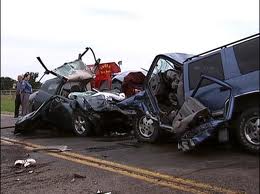
It was a tragic story of unspeakable loss when we learned of four siblings’ deaths in a Conyers, Georgia fire in a duplex on January 8, 2013. As a plaintiff’s personal injury lawyer, I so often help families deal with unexplainable loss and sorrow. We have since learned that the fire was started by a six year old brother of the four siblings who died. Apparently, the young boy was playing with a cigarette lighter in the stairwell of a duplex the family rented. I say “started the fire” instead of “caused their deaths” because the real “proximate” cause of the deaths was the lack of any smoke detectors in the rented duplex. “Investigators… determined that the only smoke alarm in the duplex was downstairs and that it had no battery in it. Dwayne Garriss, state fire marshal, said it is state law that smoke detectors must be placed outside any sleeping area. However, he said the landlord will face no liability, because the law carries no penalties for a first offense. It provides a $25 fine for a second offense.”
That’s a crime in and of itself, isn’t it? Certainly, failing to have the mandatory smoke detectors in place as required by law and then renting the duplex to a family with five small children is criminal. Under Georgia law (O.C.G.A. §25-2-40) an approved battery operated smoke detector is required in every apartment, house, condominium, and townhouse constructed prior to July 1, 1987. The smoke detector is to be located on the ceiling or wall at a point centrally located in the corridor or other area giving access to each group of rooms used for sleeping. Where the dwelling has more than one story, detectors are required on each story including cellars and basements, but not including uninhabitable attics. The detectors must be listed and meet the installation requirements of NFPA 72. The law is to be enforced by local building and fire code officials.
It seems that the landlord, at the very least, recklessly subjected the family to exactly this type of risk of death. Obviously, had there been smoke detectors, the alarms would have gone off and would have awakened the mother in time for her to save her childrens’ lives. Instead, they are dead and she is left with horrible burns on most of her body.

 Atlanta Injury Lawyer Blog
Atlanta Injury Lawyer Blog





















